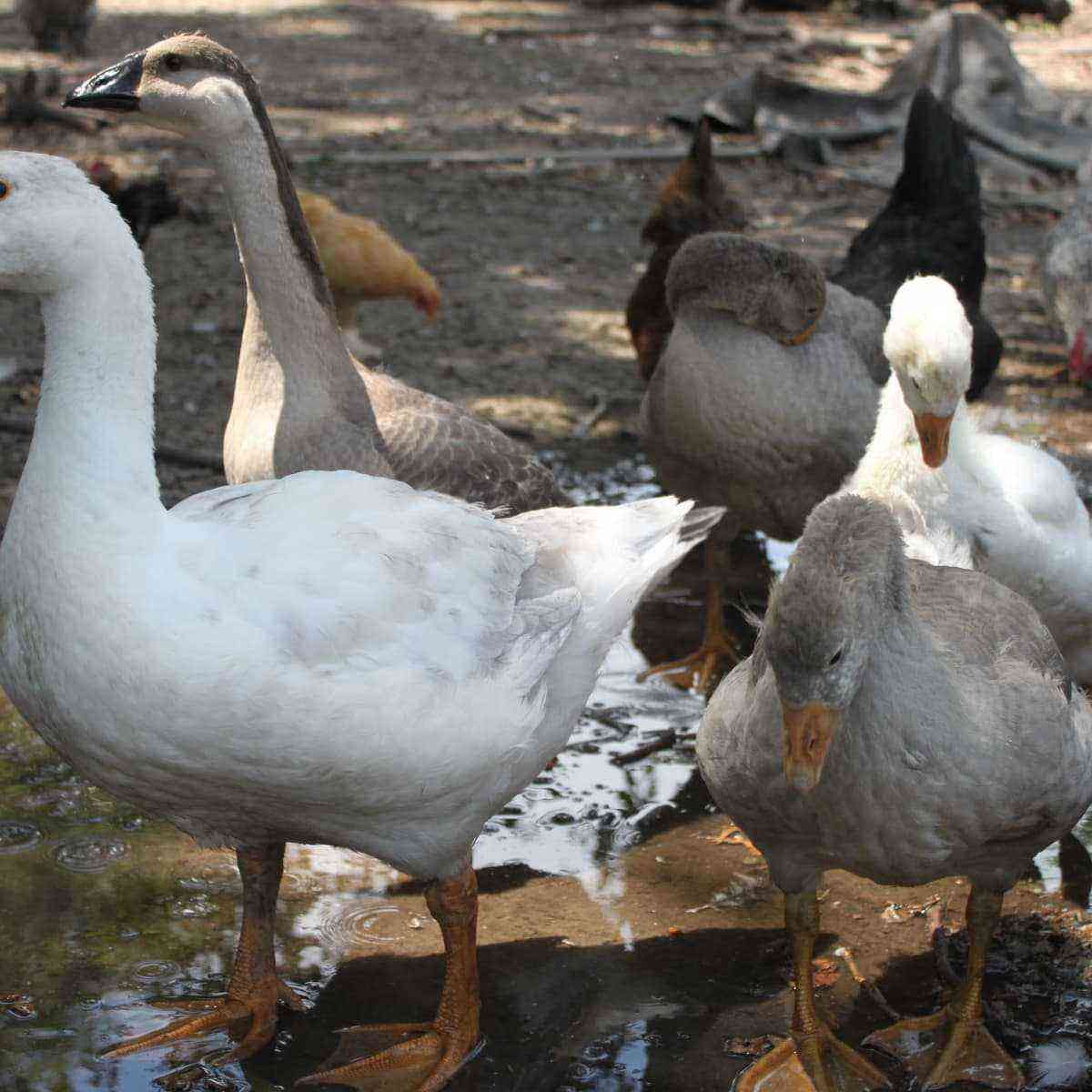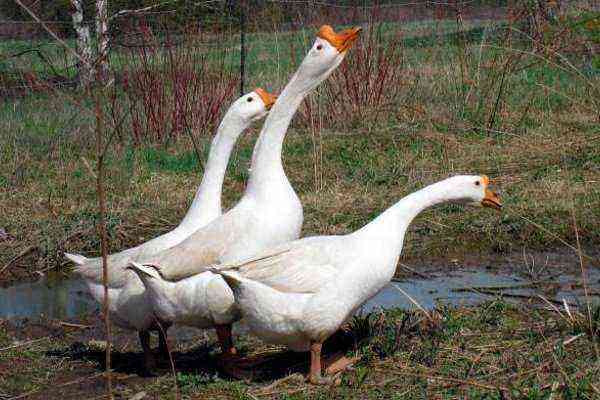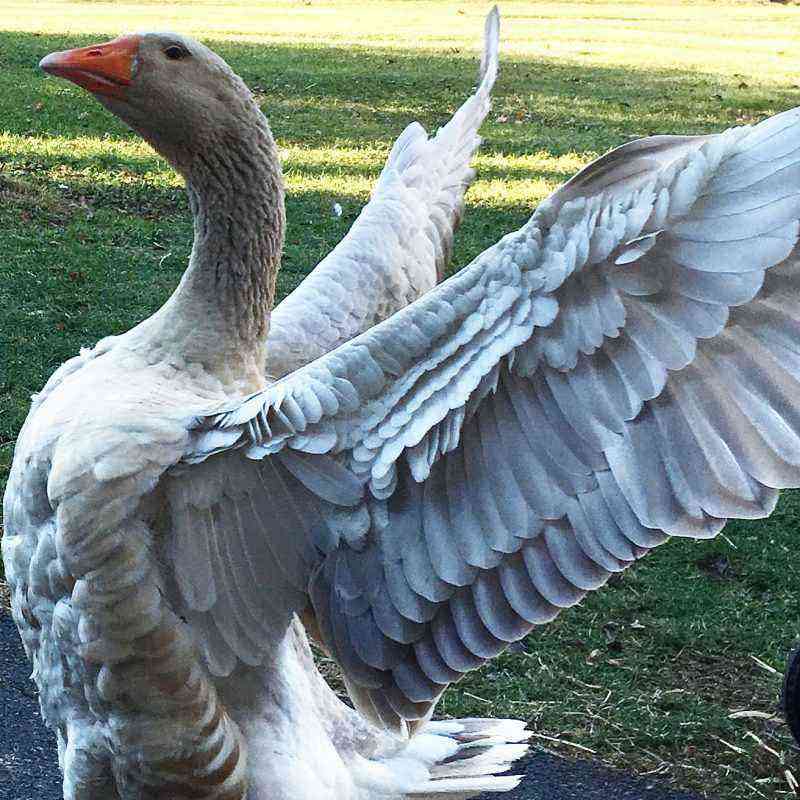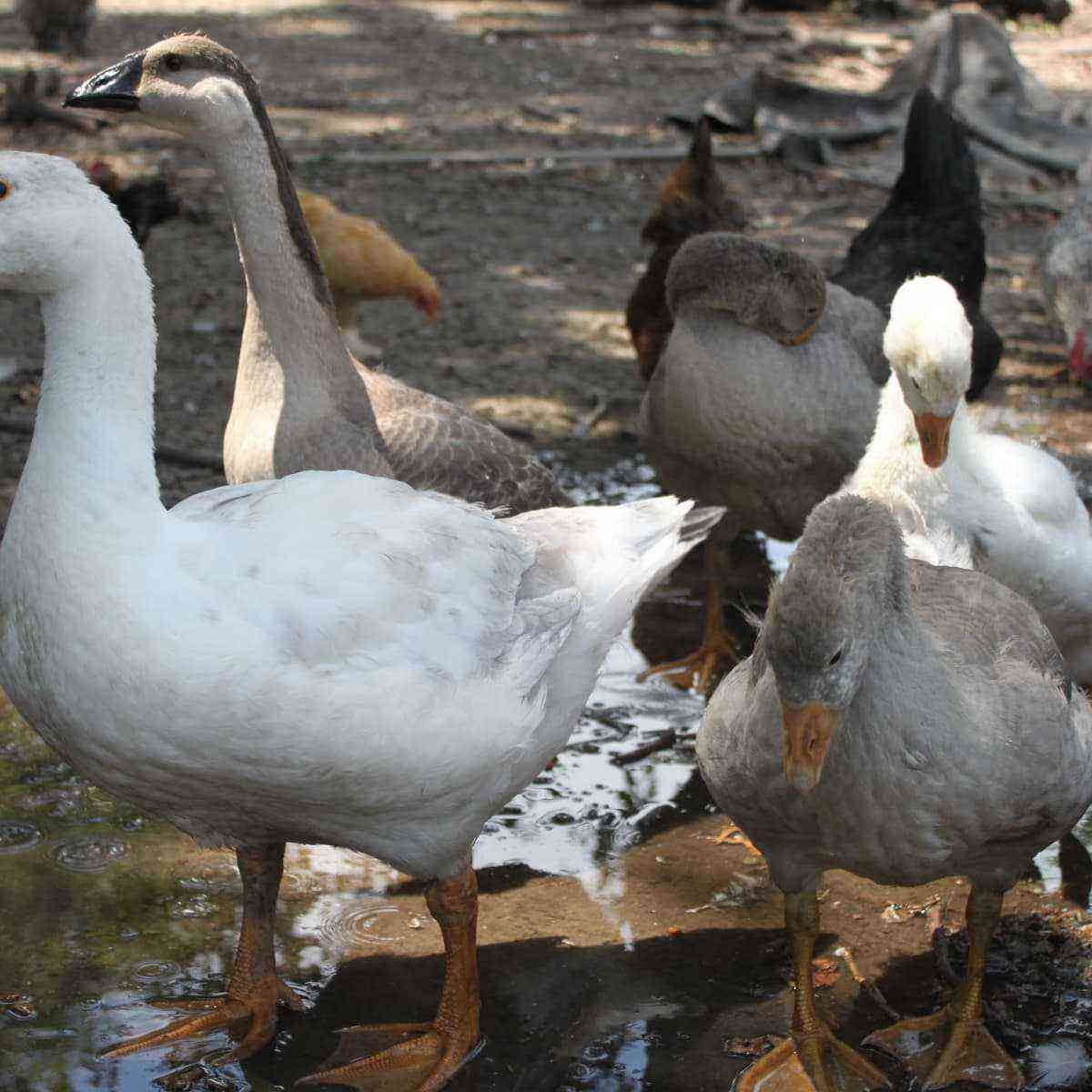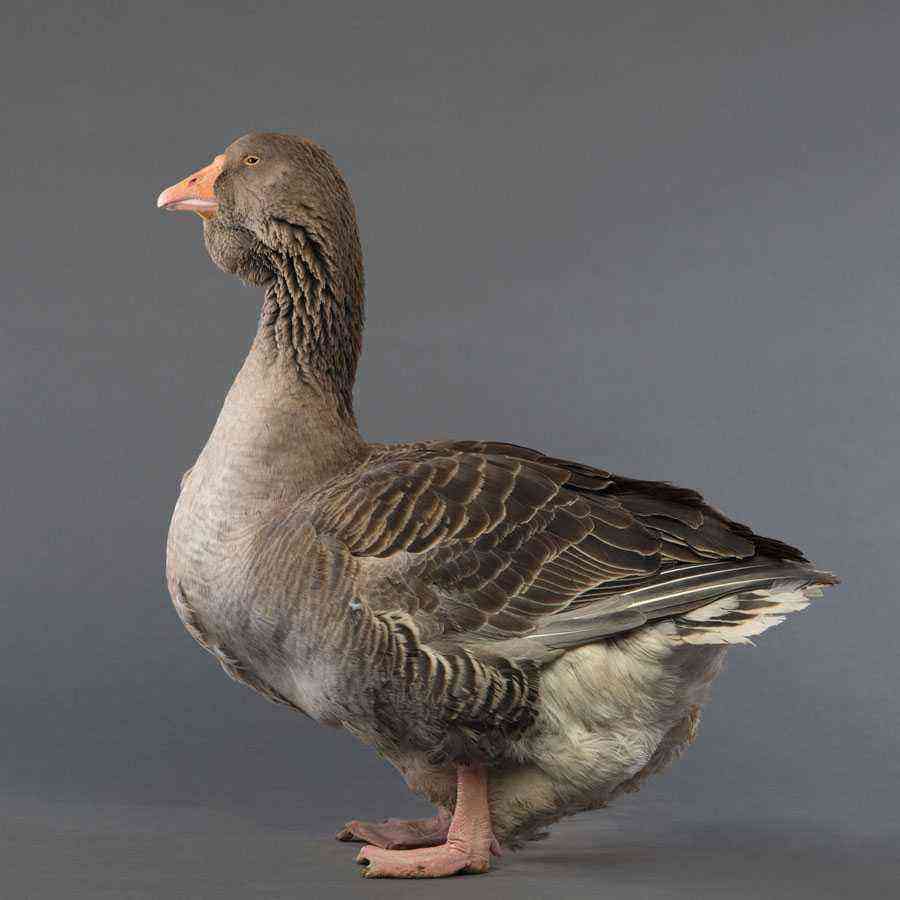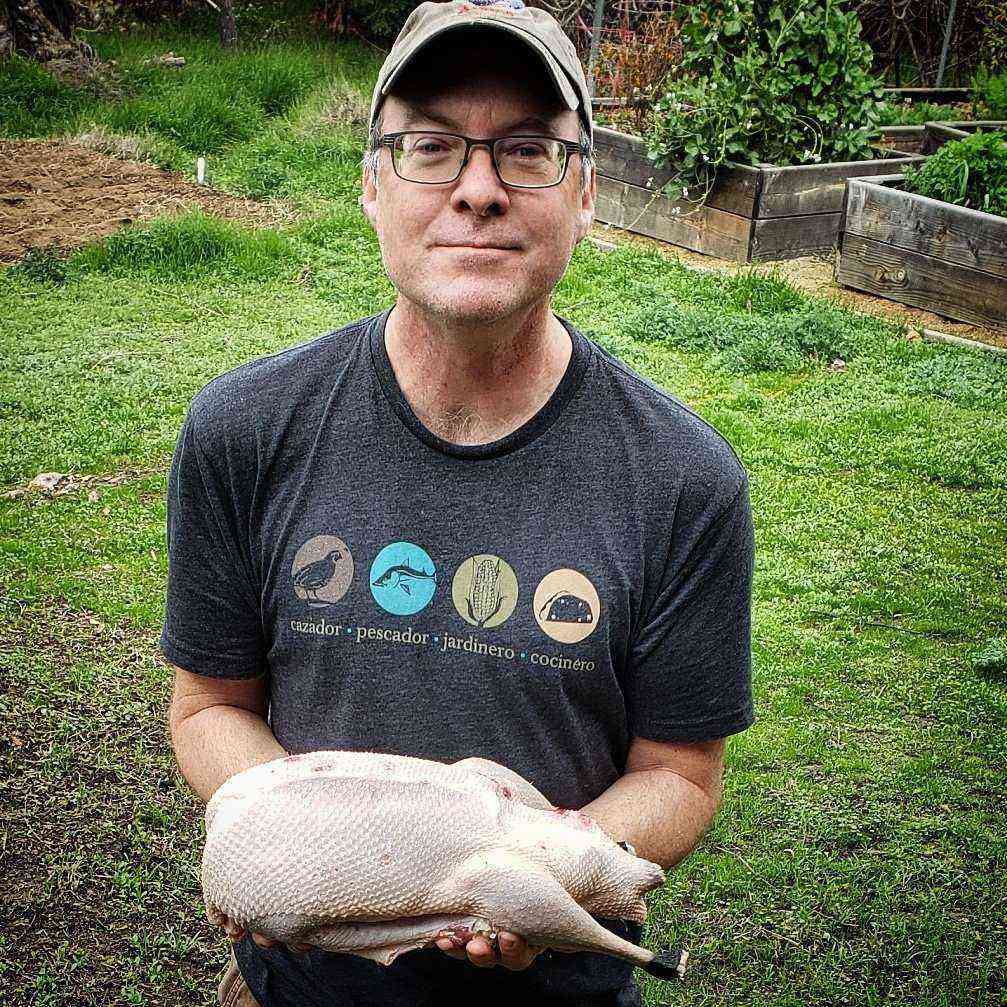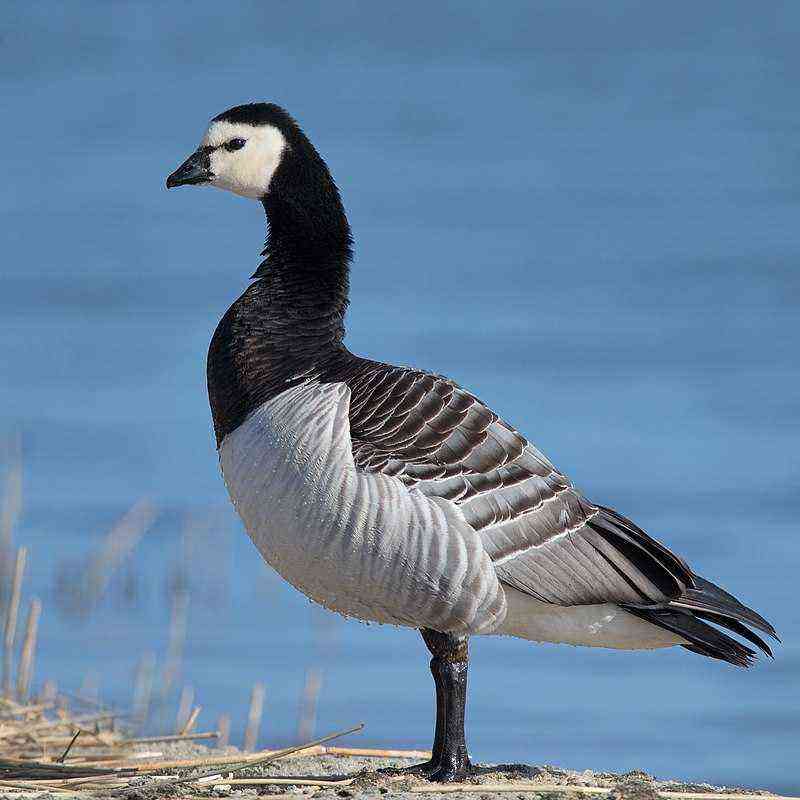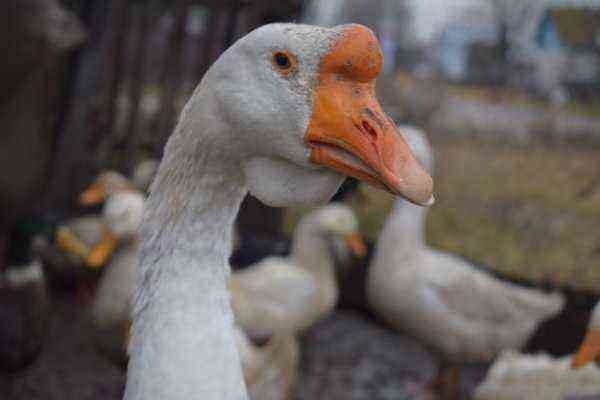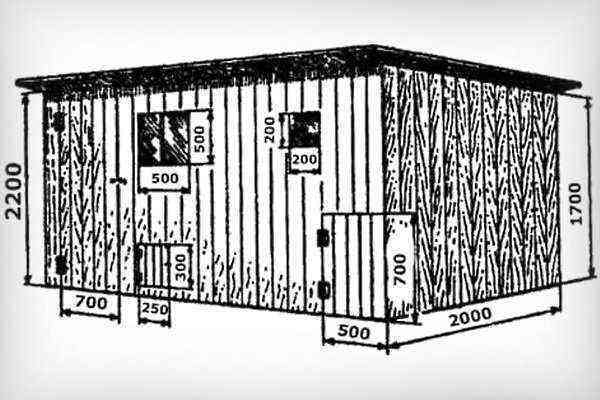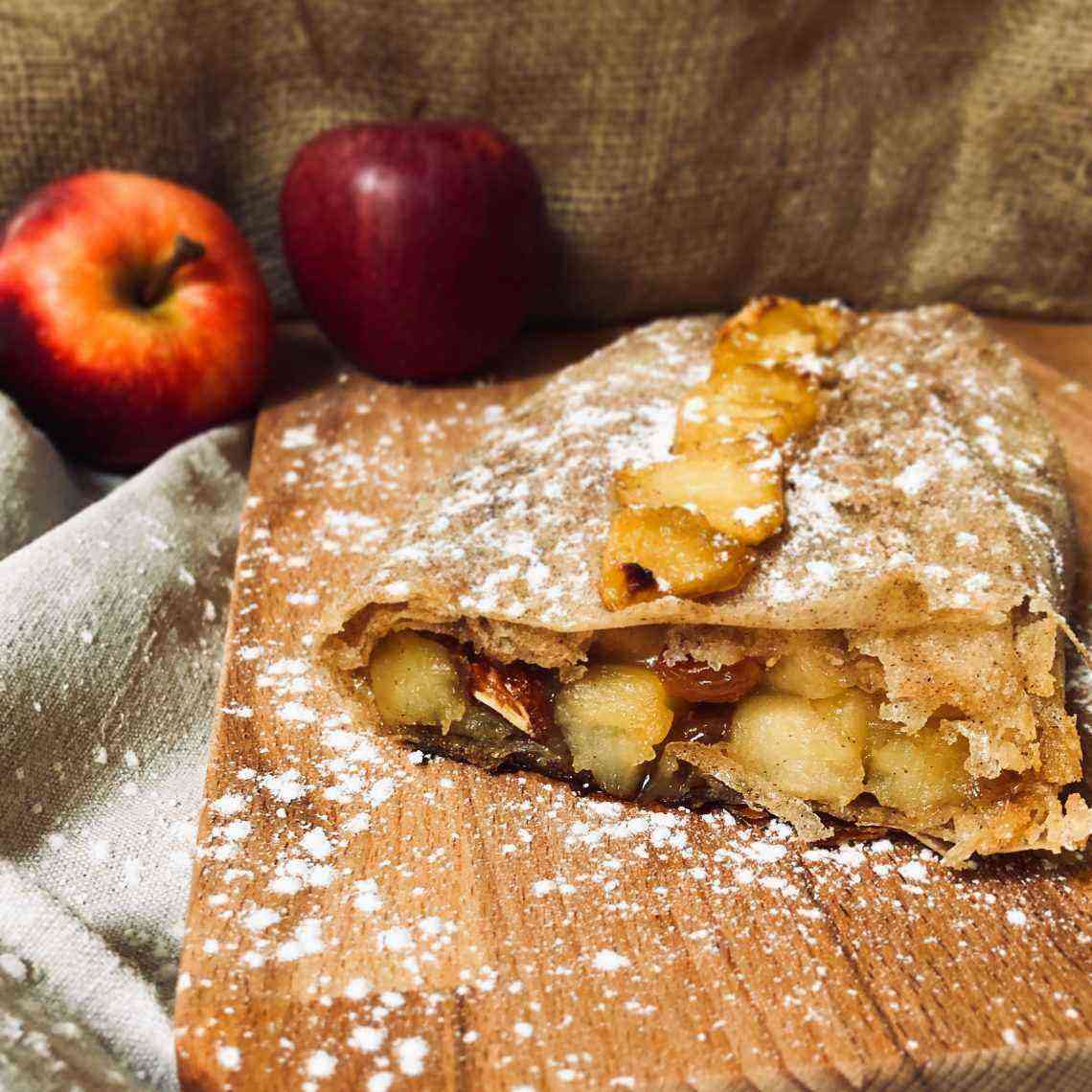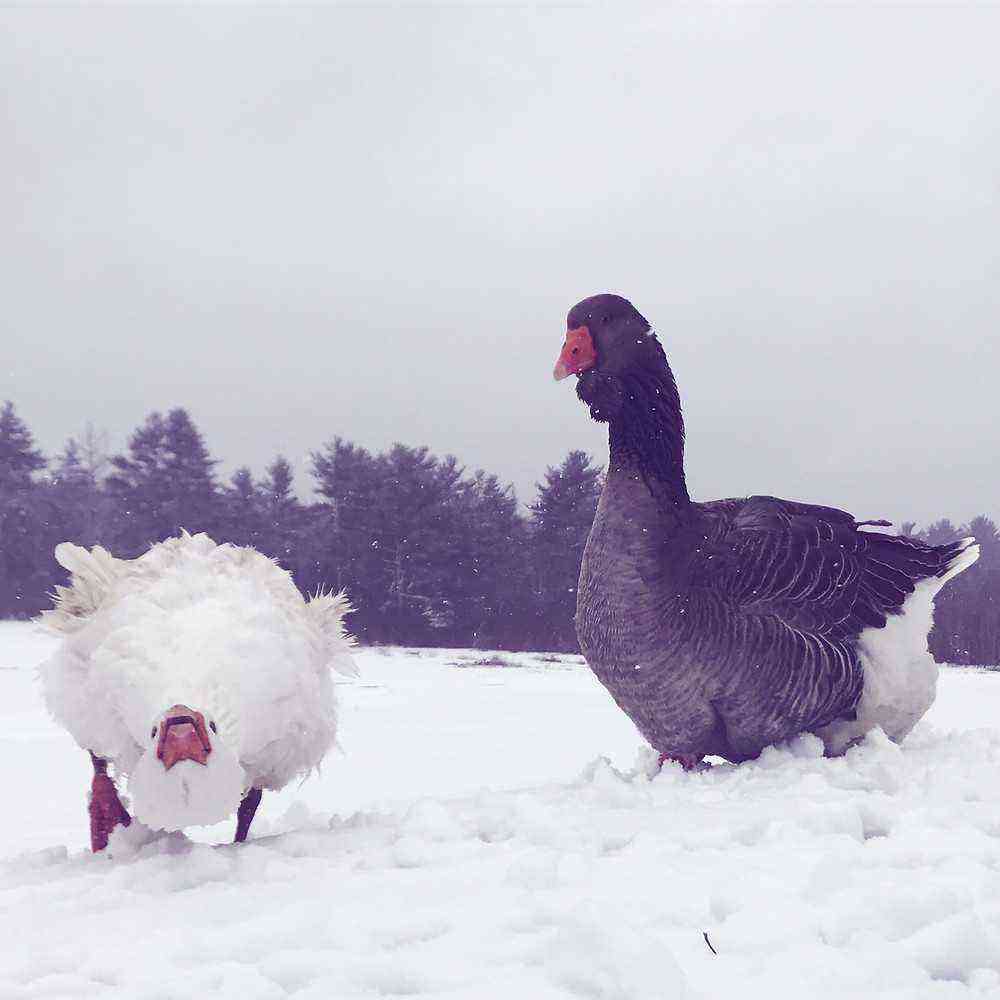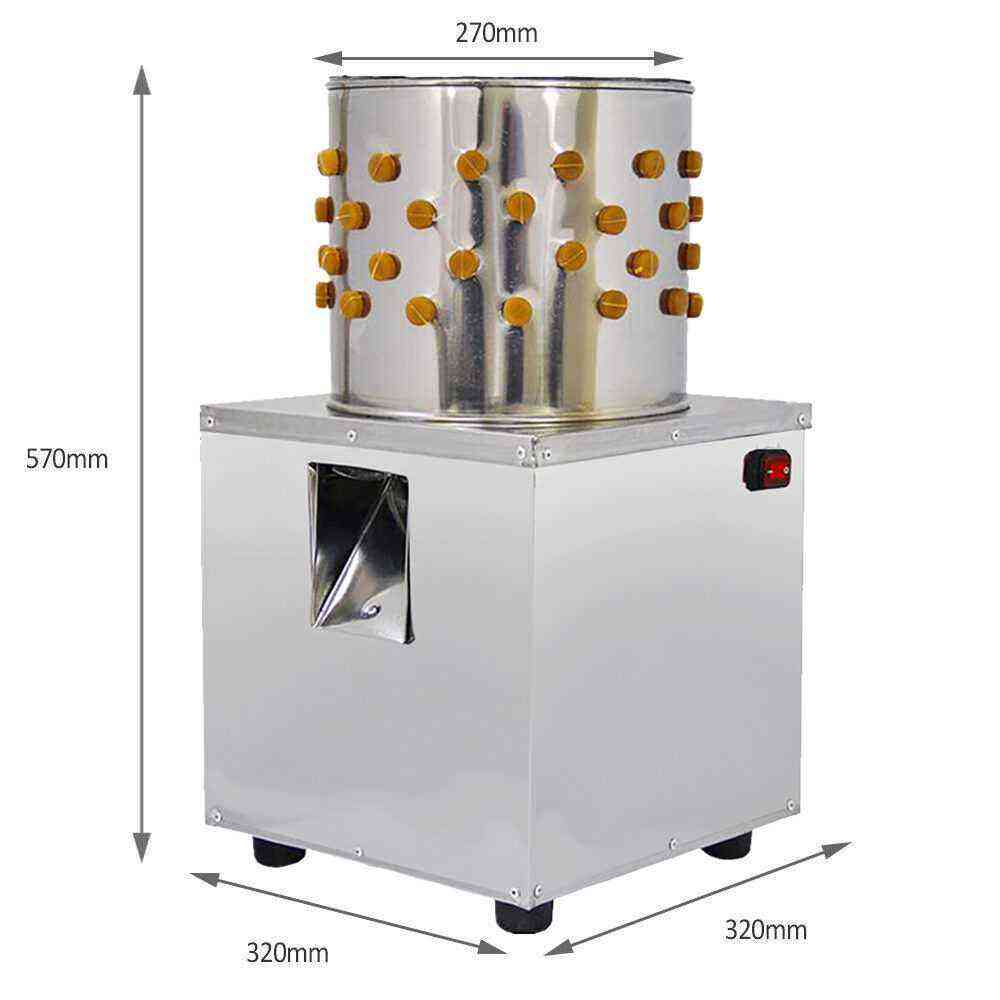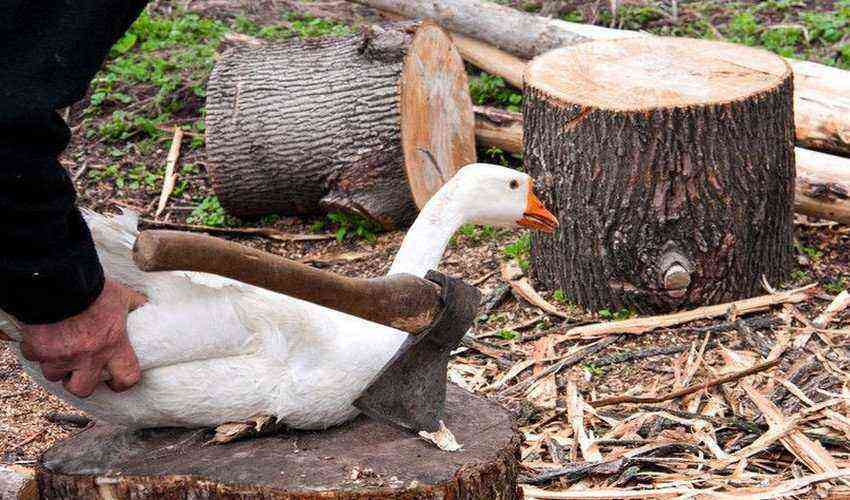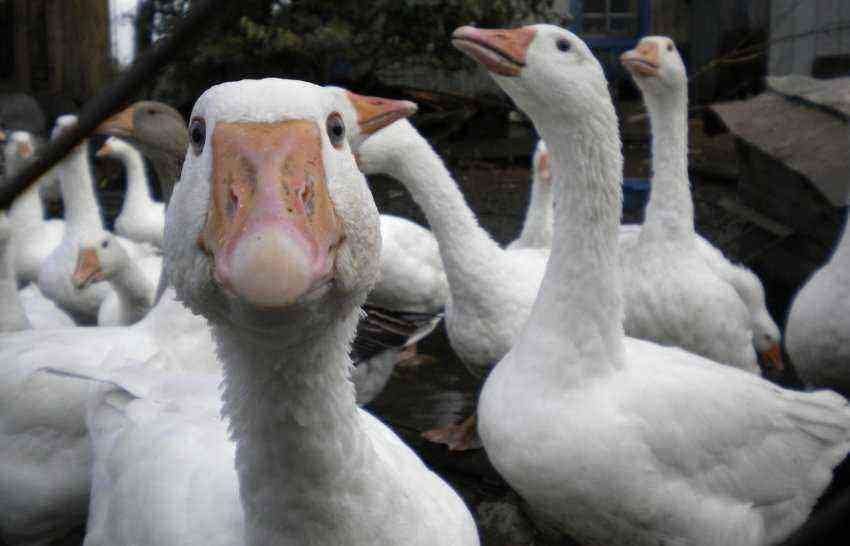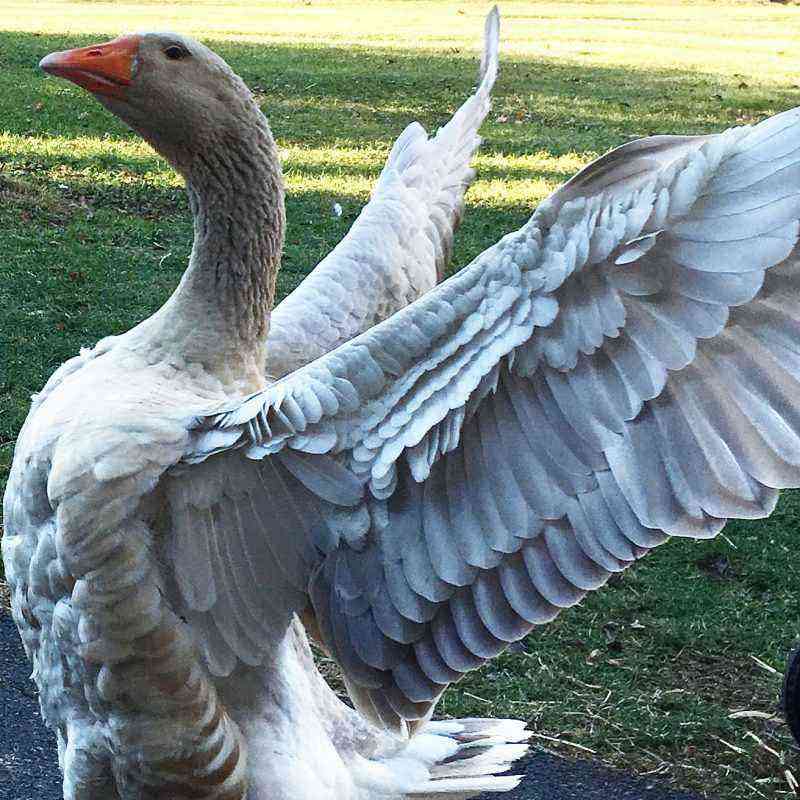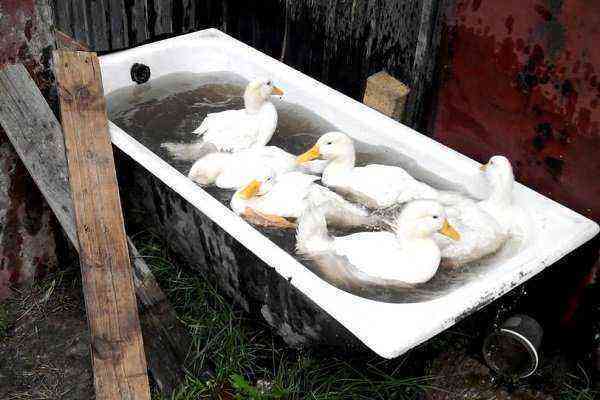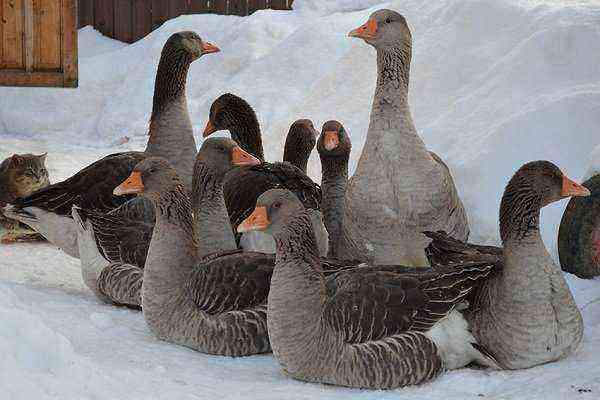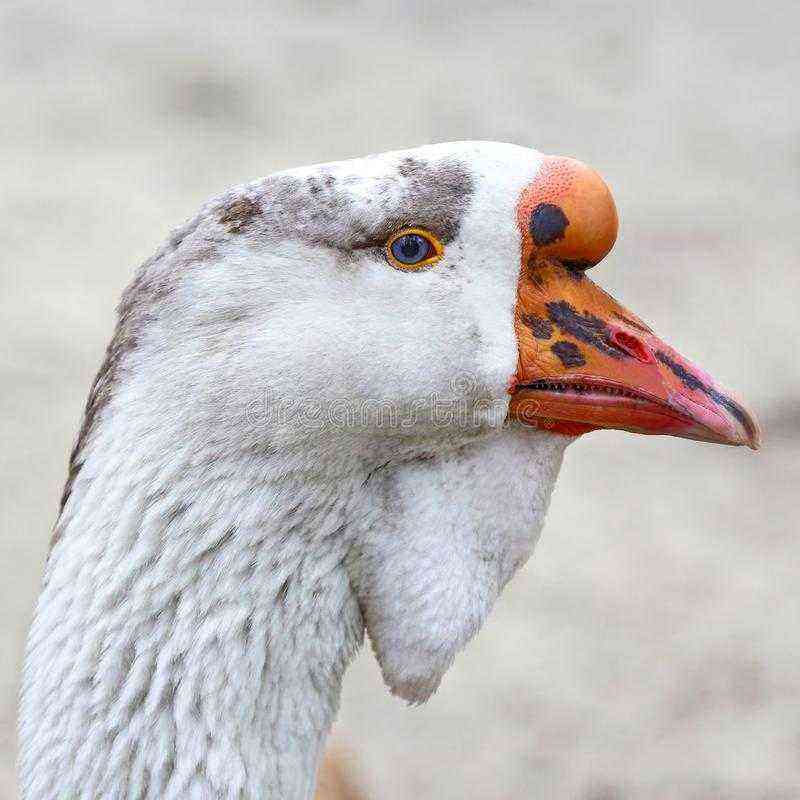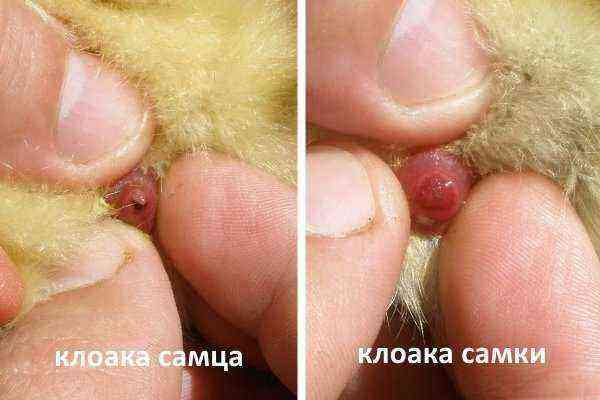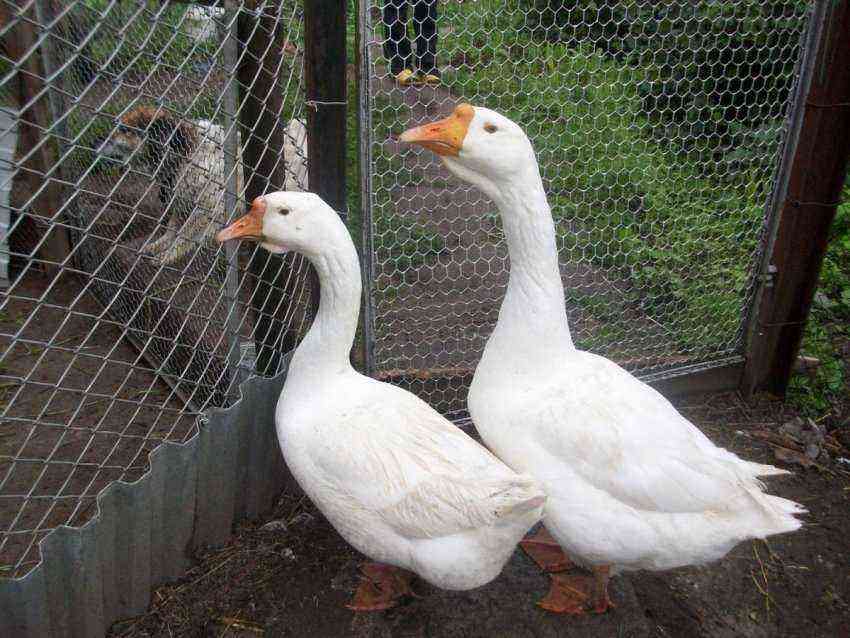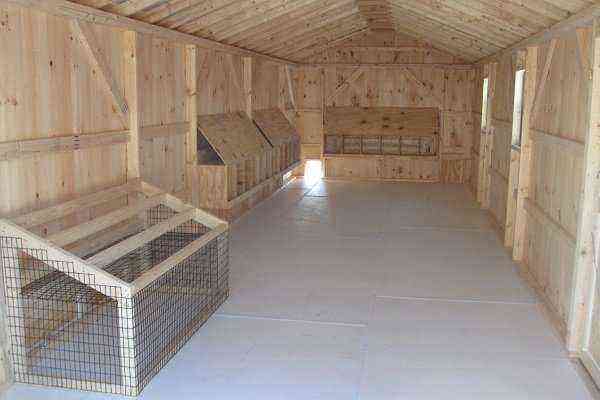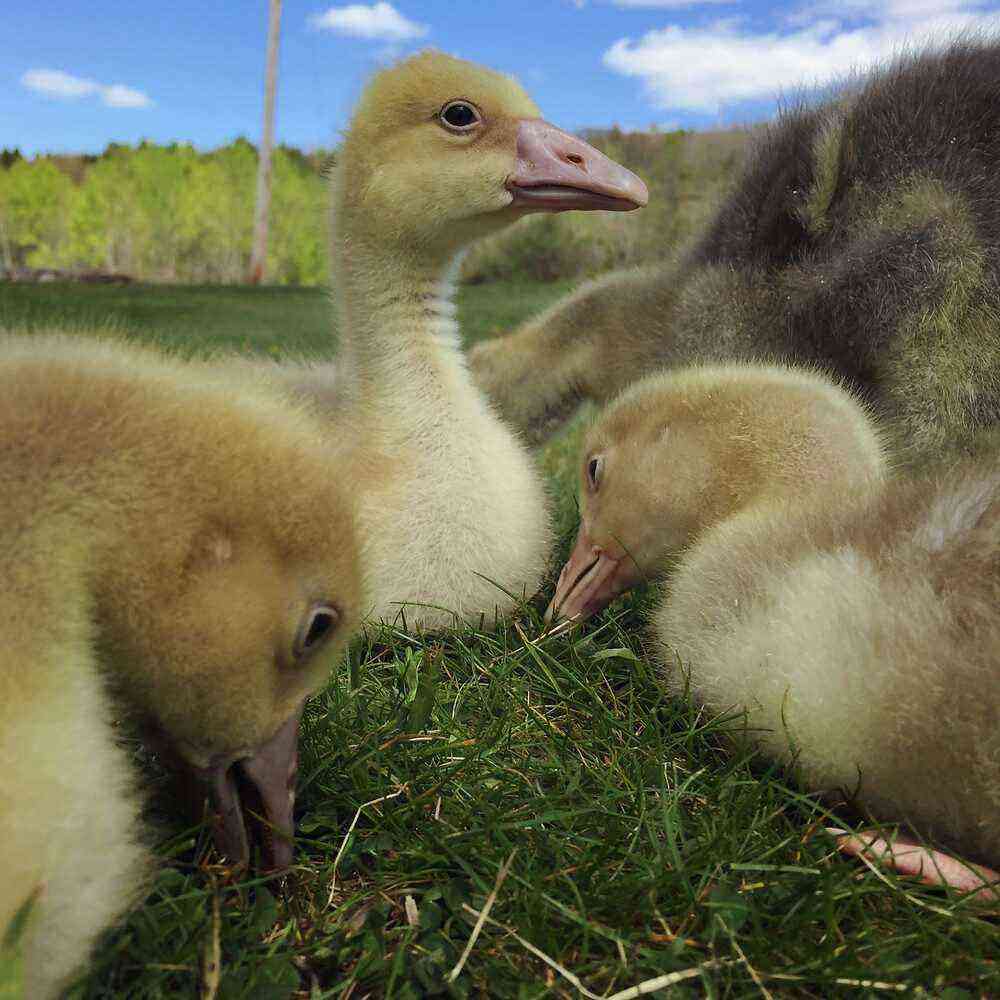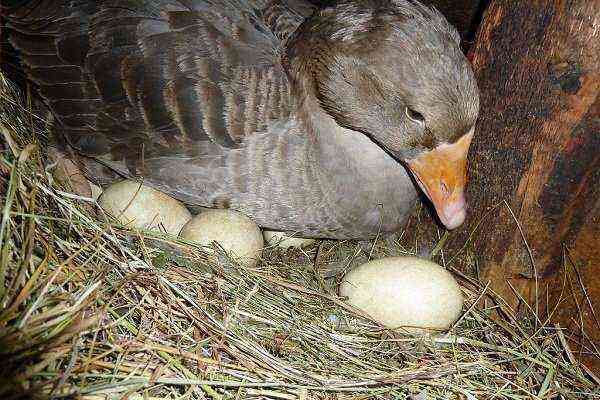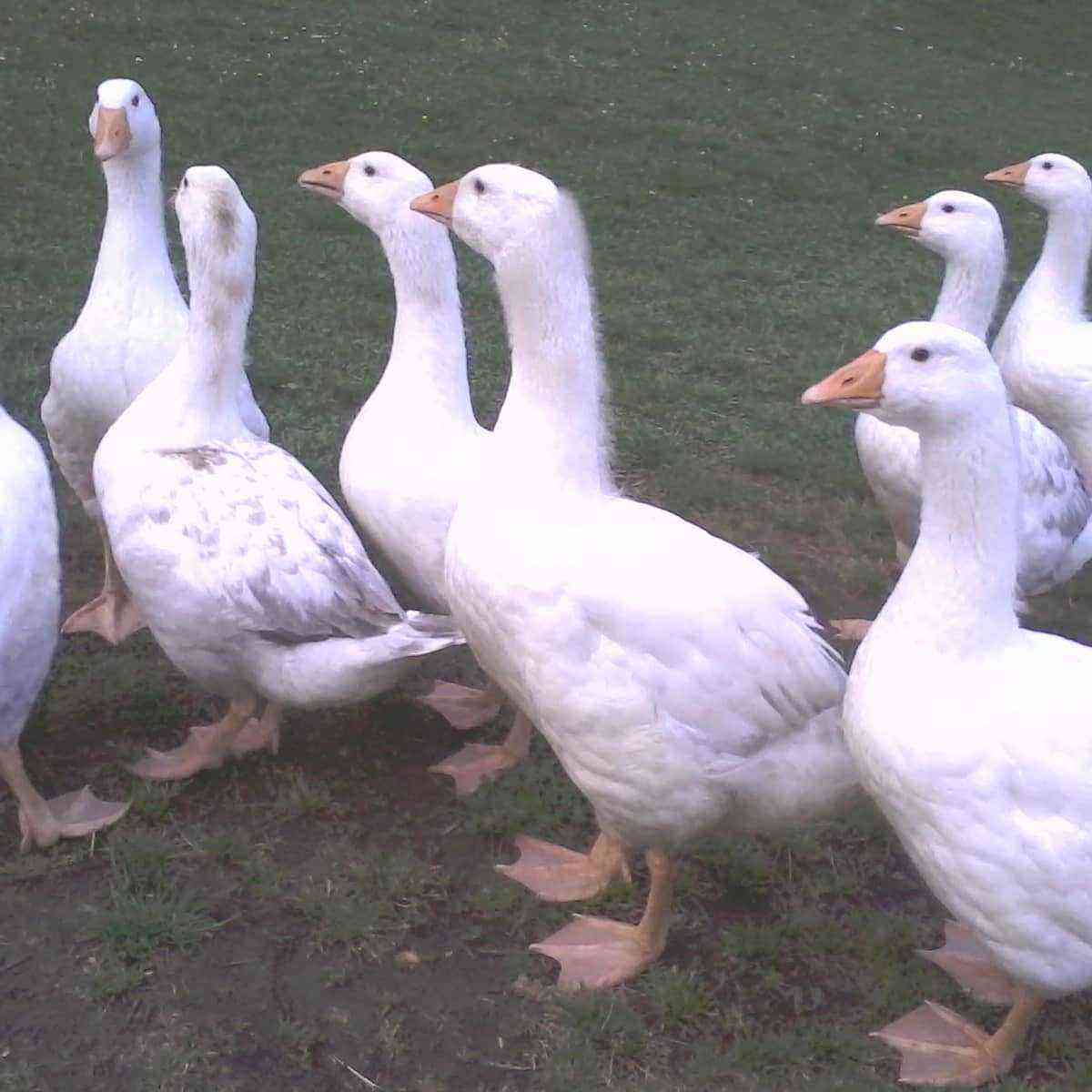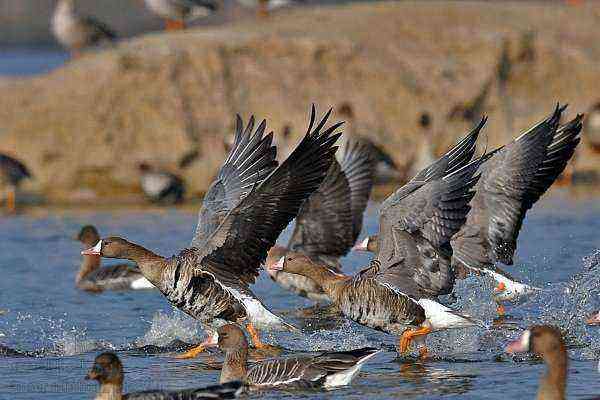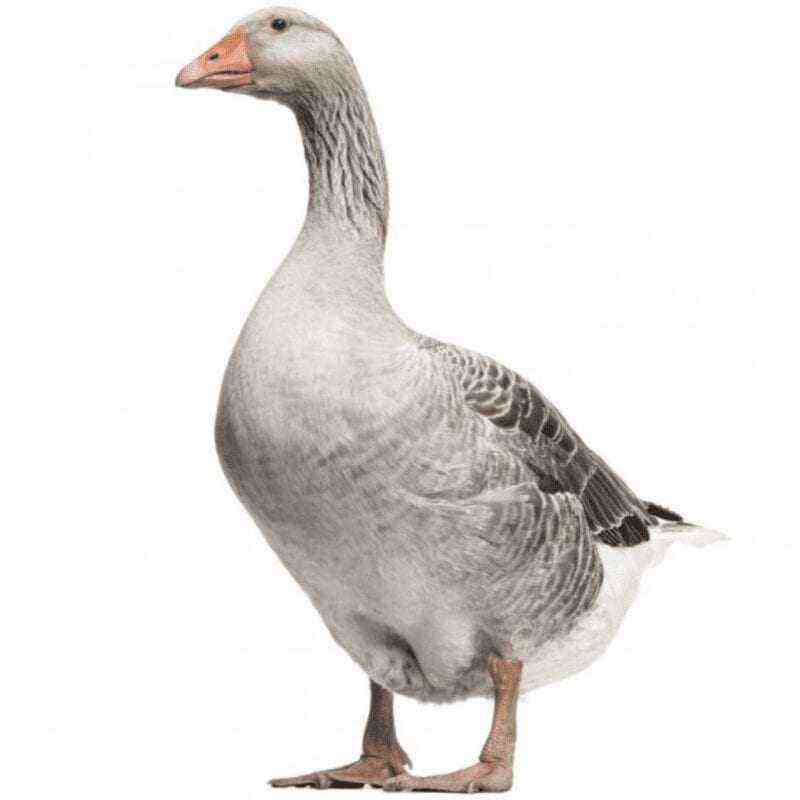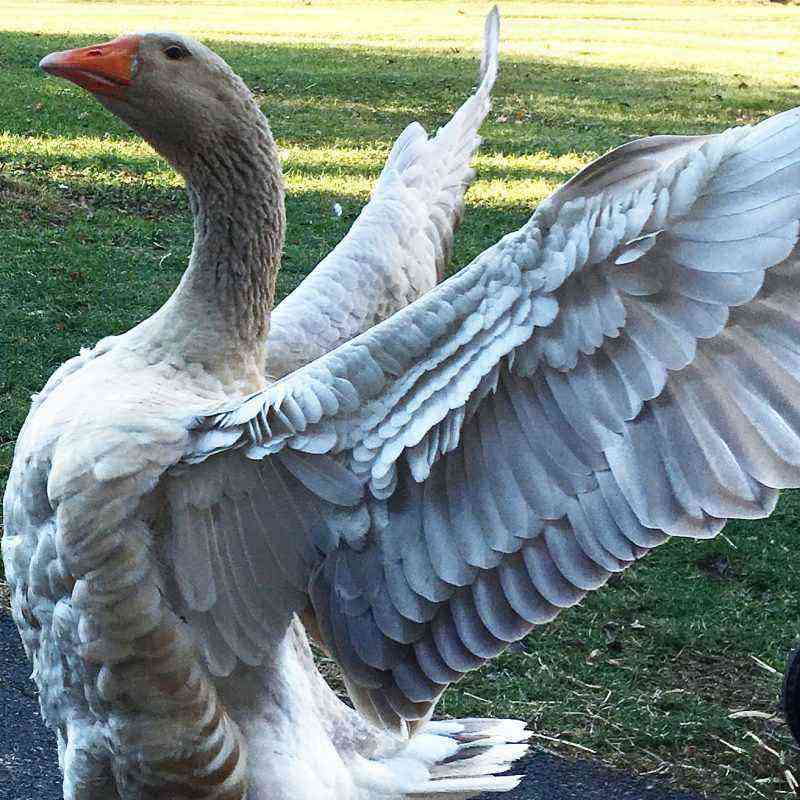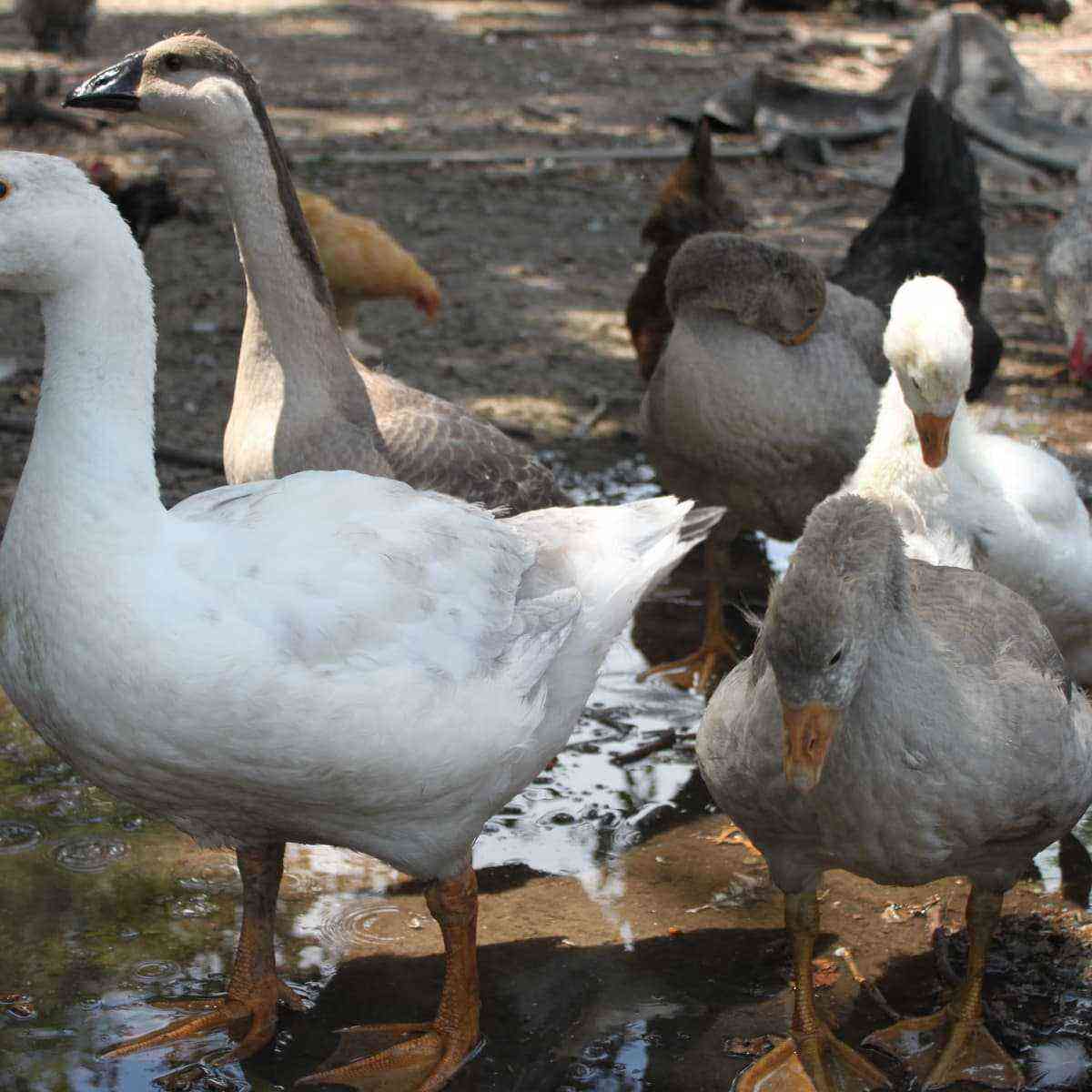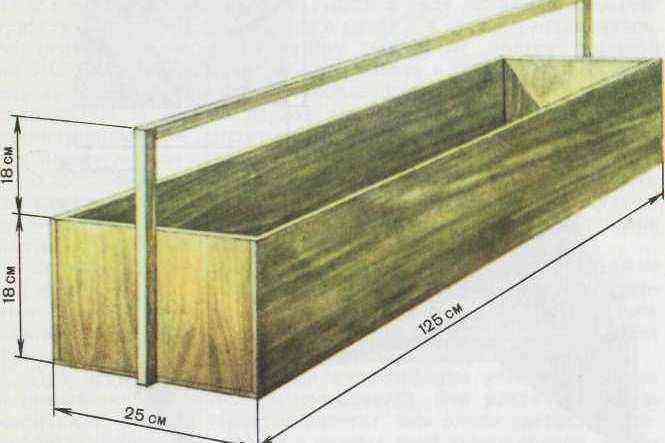Various devices are used as drinking bowls for geese. Some farmers use bowls, cracked dishes, basins, make drinking bowls from improvised materials. Others buy store-bought products. In any case, the containers must meet the basic requirements – to be safe for birds, clean, always filled with water and easy to handle by humans.
Types of drinkers for geese
There are many varieties of goose drinkers. Each type has its own pros and cons, features, dimensions, simplicity or complexity of making it yourself. And this is an important factor, since purchased options (taking into account the number of livestock) will cost quite a lot.
One-sided
Single-sided drinkers include devices that require birds to drink water from only one side. In this case, the geese will not interfere with each other, touching their beaks and foreheads.
The easiest manufacturing option:
- take a deep plate and a glass jar;
- pour water into a jar;
- cover with a bowl and turn over.
The disadvantage of this design is the floor location. Birds easily step into it with their paws, spreading dirt and excrement.
Grooved
Gutter-shaped structures are used when growing geese in cages, since the drinker is attached to the mesh wall with staples. Devices are found in industrial and small farms, less often at home.
The trough tank consists of a rectangular or round tin trough with special brackets for fastening. For self-manufacturing, a plastic pipe with plugs on 2 sides is used.
A prerequisite is the creation of several holes on top along the entire horizontal length, so that the bird can lower its beak and get drunk without polluting the water. It is advisable to install an adapter, which will allow you to supply liquid as conveniently as possible.
Advantages:
- economy of water consumption;
- purity;
- lack of splashes (especially important when it gets cold);
- the possibility of scaling – with an increase in the number of geese, it is enough to attach 1 more or more pipes.
Disadvantages:
- difficulties with cleaning the system from the inside;
- the need for alignment during installation – otherwise the water will drain to one side.
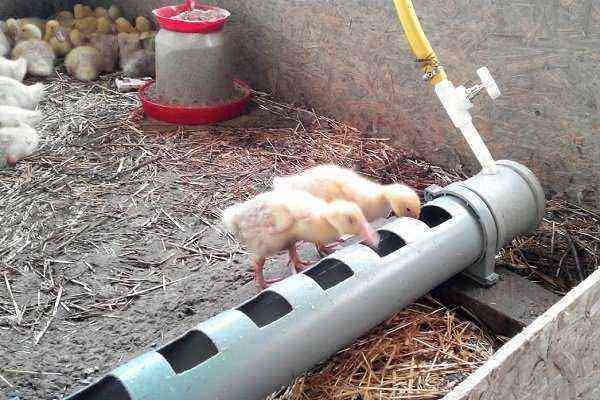
Nipple
They are considered the most common due to the low cost of the product. They are used outdoors, starting from the age of goslings at 3 weeks. They belong to an automatic system, as they work under water pressure or at a specific liquid level.
The nipple consists of a metal rod with a diameter of at least 1,5 and not more than 2 mm. The upper end must be equipped with a rubber seal. There is a main body. Made of plastic, steel, aluminium. A plastic pipe with “outgoing” nipples is attached to it.
In some designs, bowls are mounted under the nipples so that water does not drain to the floor.
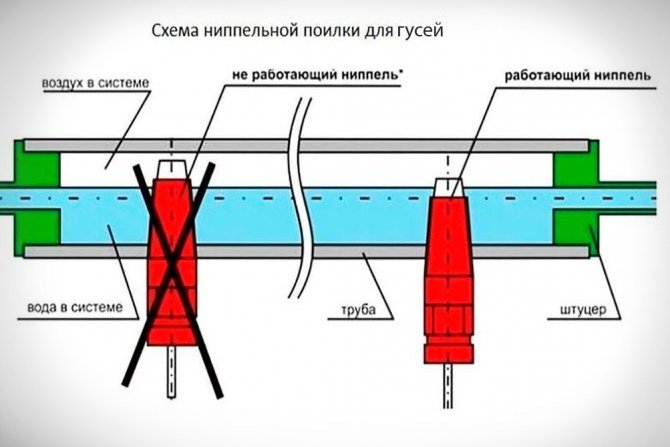
The main advantages:
- used for all types of poultry;
- acceptable cost;
- the ability to install to the required height (depending on the age of the geese);
- there is no need to fill often, as the case is voluminous;
- complete purity of water;
- economical consumption of liquid;
- no splashes.
Main cons:
- in purchased options, marriage is often found, it is required to choose the right manufacturer;
- if sand and other small particles get into the nipple, it starts to leak;
- difficulties with self-production;
- the need for an accurate calculation of the number of “nipples” – at least 10 nipple is needed for 1 birds.
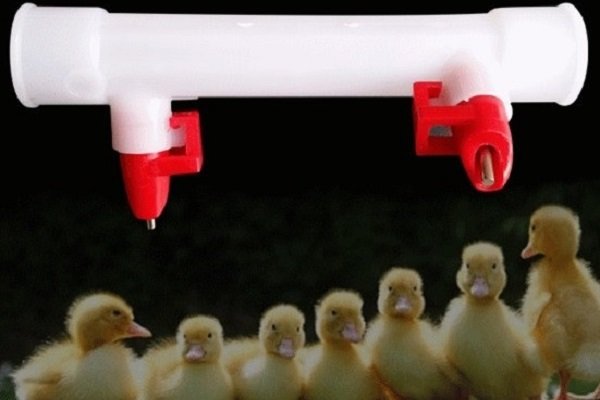
Cup
This is a design, which is a bowl suspended from a wall or installed on the floor. A large herd requires a multi-tank system. They are attached to a single plastic pipe.
The diameter of semicircular bowls is from 6 to 8 cm. The drinker works in this way:
- the bowl is attached to the base with a spring, an axis of movement, a silicone gasket and a valve;
- until the liquid enters the tank, the valve remains in the open position;
- when water is supplied, as it is filled, the cup falls on one side;
- after filling the container to a fixed level, under the influence of water pressure, the valve closes, the liquid stops flowing;
- when there is less drink in the bowl, it rises, the valve opens again, and water is again poured into the drinker.
Cup models belong to autodrinkers.
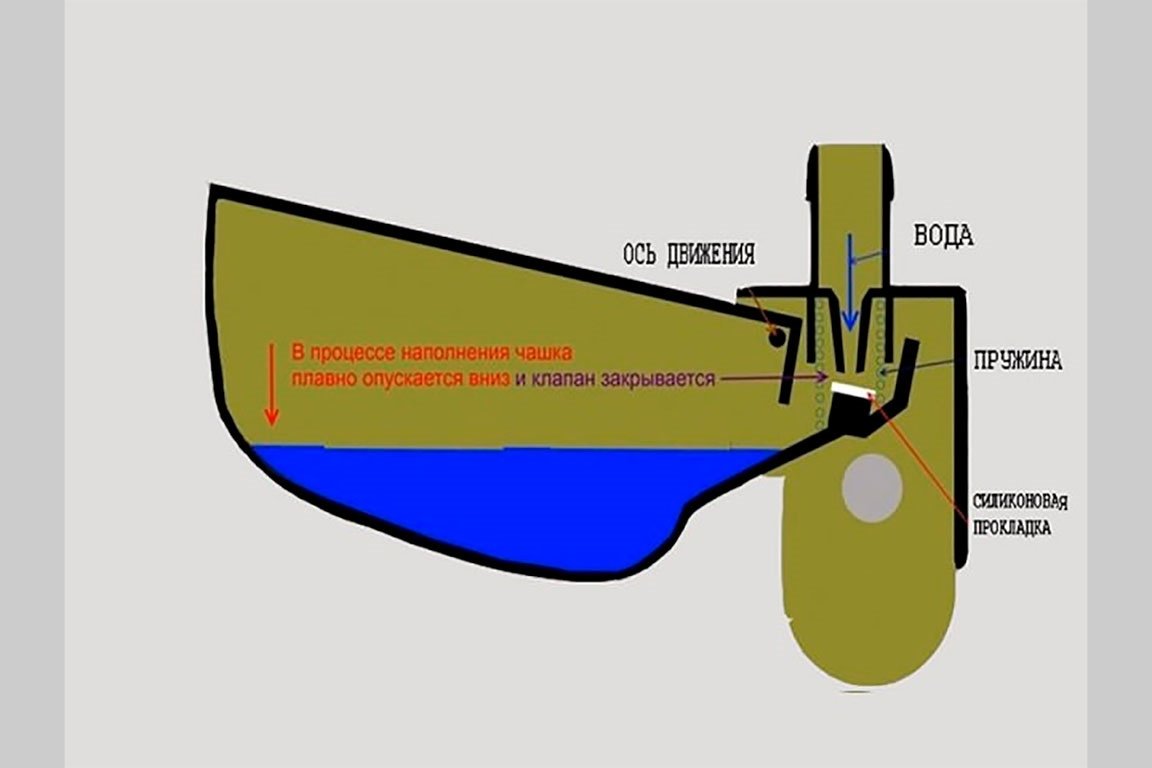
Advantages:
- convenience for birds;
- no need to control the fullness of the container;
- low cost;
- ease of installation of the purchased model.
There is only one drawback. If debris enters the system, the rubber valve fails.
Vacuum
Such devices are designed for young animals up to 3 weeks. The vacuum model consists of one plastic container (minimum 2 l) and a plate stand with an annular semicircular trough.
How to apply:
- water is poured into the base;
- covered with a stand;
- flips upside down;
- when the liquid is consumed, the radial channel is aired;
- the penetration of air into the container contributes to the new filling of the plate with water.
The system is considered semi-automatic. The principle is based on the work of atmospheric pressure.
This model can be suspended. There are slots in the base. After 3-4 tides, the water collector fits snugly against the bowl. Due to this feature, the liquid does not come out.

Advantages:
- no need to frequently fill the tank with water;
- constant fluid supply without human control;
- the bulk of the water in the tank is not polluted.
Disadvantages:
- the smaller the tank, the more often you have to pour water (it is better to choose a container of 5-6 liters);
- it is necessary to hermetically connect both parts – otherwise the structure will turn over or the water will flow out all.
Combined
There are many variations of combined drinking systems. Most often this is a design consisting of a pipe and fluted / cup containers under the rod with a nipple water supply.
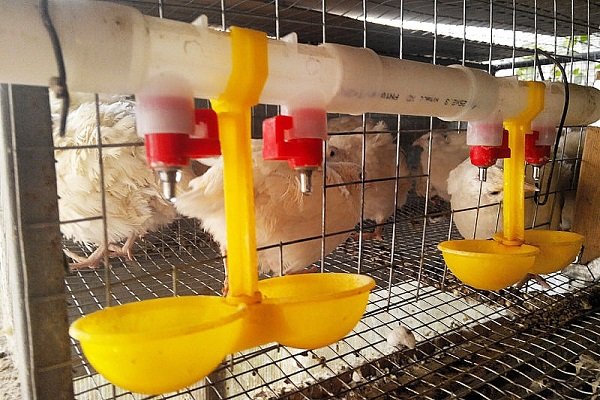
This also includes autodrinkers. These are versatile products. They do not require any control from the farmer. It is enough to connect a plastic pipe or an elastic tube, turn on the tap, and water will flow into the drinker as needed. Tank system – nipple or cup.
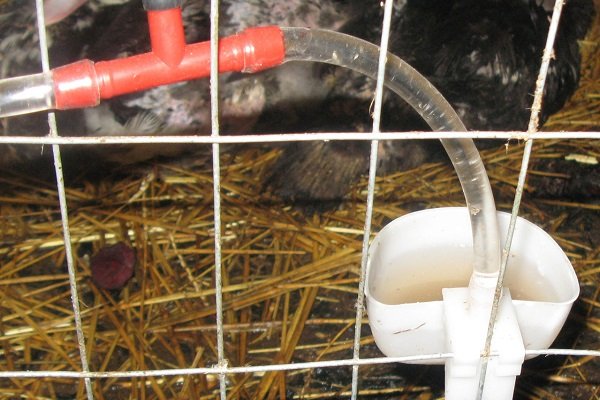
Pros:
- universality;
- automation;
- saving water consumption.
Disadvantages:
- splashing water;
- difficult to build a structure yourself.
Capacitive, with separation of the drinking front
Comfortable and very simple design. Easy to make on your own. It is enough to have a large capacity and a high mesh cone mounted on a basin of water. Thanks to this, the geese drink in a divided space, and do not interfere with each other.
Another advantage is that the water remains relatively clean, since the birds cannot get into the bowl with their paws (dirt is carried only with their beaks). In addition, the cup is easy to clean, water is poured into it simply.
Minus one – a person will have to constantly monitor the fullness of the pelvis. How such a watering station works in reality, see the video:
One of the variations with separation are tray drinkers. The difference is that a rectangular plastic / metal tray is used as a container. The main plus is that if you make a tray more than 2–4 m in length, you can use it for large livestock.
Winter drinkers for geese
For the cold season, it is strictly forbidden to water geese with cool and especially icy water. Farmers use special tools. For their manufacture, a heating element is required (a power of 1,5 kW is enough) and any large capacity (for 30–50 liters).
For example, a metal canister. It contains a heating element connected to electricity. Additionally, it is recommended to build in a thermostat (acceptable temperature from + 5 to + 10ºС). Enough to include 3-4 times a day.
Such a system has the following advantages:
- water is constant warm;
- do not need to add liquid too often;
- low power consumption.
Among the minuses it is worth noting:
- the difficulty of self-manufacturing (requires experience with a welding machine and electricity);
- the heating element often burns out if there is no automated replenishment of the tank with water.

The choice of drinkers depending on the age of the geese
Not every type of drinker is suitable for all ages of geese at the same time. It would not be superfluous to pay attention to the recommendations of specialists and experienced farmers regarding the choice:
- Goslings under 3 weeks old. They are suitable only for vacuum models made of plastic (metal is unacceptable). The temperature of the water in a small container is kept at an optimal level.
Vacuum products allow you to exclude the death of small pets. They will not choke on water and drown. - Goslings 3 to 6 weeks old. The best option is a nipple system. By this age, the goslings already understand how to drink from the “nipples”. Drinkers are easy to lift higher as pets grow (for the convenience of chicks).
- adult livestock. It is permissible to use absolutely any devices, but it is better to give preference to the same nipple ones. It is determined by the observance of the hygiene of breeding geese.
Sizes depending on the number of birds
Drinker parameters must be taken into account. This is done based on the age of the birds and the number of livestock.
Compliance with indicators allows you to:
- create comfortable conditions for geese;
- provide all pets with water (with an insufficient number of devices, birds that are not leaders will be left without drinking, which will lead to dehydration and further death).
Dimensions in length, based on age per 1 bird:
- from birth to 2 weeks – 4-5 cm;
- from 2 to 4 weeks – 6-8 cm;
- from 1 month to 3 – 9-14 cm;
- from 3 to 4 months – 15–17 cm;
- adults – 20–22 cm.
Nipple models deserve special attention, since it is important to place the “nipples” correctly so that the birds do not interfere with each other. Observe the distance between the fittings of at least 30 cm, maximum – 35-40. One rod is intended for 3 heads.
Which drinker is the most convenient for geese, do you think?
Combined
25%
The process of making a drinker with your own hands
It is expensive to buy a large number of drinkers for geese in the store. Farmers prefer homemade designs. There are the simplest options available to beginner poultry farmers.
Tools and materials
Before you make a drinker, make a choice – what kind of system you want and can make. The option determines the material of manufacture (for a vacuum one, you can easily get by with a plastic bottle and a bowl, for a fluted one – with a sewer pipe and adapters, etc.).
The choice of tools also depends on the type of drinker. But in all cases, you need a tape measure, pencil or marker.
Step-by-step instructions for assembling different drinkers
Craftsmen adapted to make drinking bowls from the remains of construction, plumbing and other available materials. Below are options that are easy to manufacture.
Option number 1 – grooved. One of the simplest designs. You will need the following materials and tools:
- plastic pipe with a diameter of at least 20–30 cm (length is selected individually);
- plugs – 2 units;
- corner adapters – 1-2 pieces;
- jigsaw, grinder or hacksaw;
- sandpaper.
How to make a trough drinker:
- Cut off the required piece of pipe with a hacksaw.
- In the intended upper part of the grinder, make holes (round, square, rectangular). Their diameter corresponds to the size of the head of a goose. The bird should freely stick its head out and reach the water.
- Treat the cuts with sandpaper so that the birds do not get hurt.
- On one side, insert the adapter (it will serve as a container for the water supply). If necessary, put the adapter on the other side (hole up). Water is poured through it.
- Close the pipe from 2 sides with plugs.
- Install so that the pipe does not turn over (attach with brackets to the grid, put on wooden spacers or simply support with bricks from different sides).

Option number 2 – vacuum. To do this, use a 5-liter plastic bottle. In addition to it, you will need:
- plastic / metal container as a drinker (diameter wider than the bottom of the bottle, height – 10–14 cm);
- nail / awl.
Production process:
- From the side at the bottom of the bottle, make a hole with a diameter of 1–1,5 cm with a red-hot awl / nail. The height of the hole is 2–4 cm below the sides of the drinker itself.
- Place the empty bottle in the tray.
- Pour water.
As the bowl empties, the water will fill up again due to atmospheric pressure.
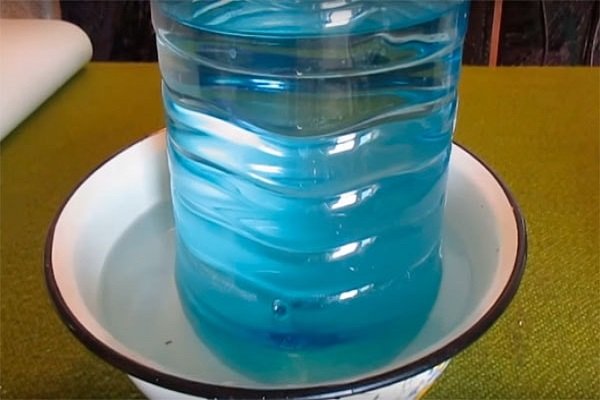
Option number 3 – nipple. You will need:
- plastic bucket at least 5 liters;
- drill;
- tap for threading;
- teflon thread – 1 m;
- nipples – 4 pieces.
Step by step instructions for making:
- Turn the bucket upside down.
- Drill holes with a diameter of 9 mm.
- Make a thread with a tap.
- Screw in the nipples. To facilitate the process, seal them with Teflon thread.
- Fill a bucket with water and hang it up. Please note that the “nipples” should be at the level of the geese’s eyes.
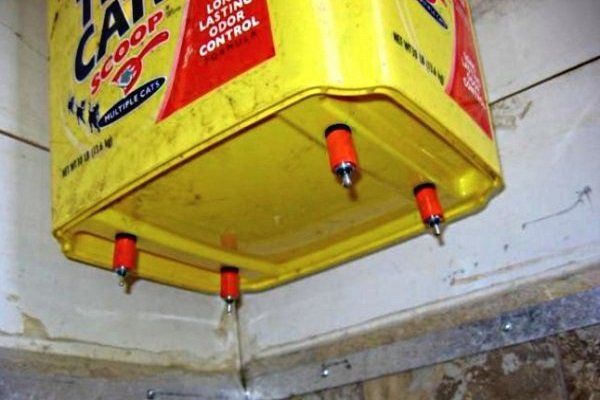
Mistakes that can be made when making a drinker
Not a single person is insured against misses, even masters with experience. With regard to drinkers, novice farmers make the following mistakes:
- Devices are made from wood. This material is unacceptable, as the tree swells, rots. This is fraught with leakage and infection of the bird (rot is a disease-causing fungus).
- Connect a drainpipe to the main drinking bowl. Such manipulation is undesirable. Geese often try to climb the drain. As a result, the structure breaks/turns over.
- Fix products “tightly”. The positive side of the action is the stability of the drinker. In contrast to the plus – washing the drinker becomes inconvenient and of poor quality.
- Do not process cuts, sharp corners. This is strictly prohibited. Birds hurt their heads and necks.
Where can I buy and how much do drinkers cost?
Goose drinkers are sold in specialized agricultural stores. It will not be difficult to purchase them via the Internet, but the main condition is to choose a trusted manufacturer. The durability of the product and the health of the bird depend on the quality of the product.
The cost varies by size, type of drinker and manufacturer. The average cost is as follows:
- nipple models – from 70 rubles. for a small piece of pipe with a nipple and up to 800 rubles. for a complete system
- vacuum — from 6–10 rubles. for one bowl and up to 500 rubles. for the complete construction;
- cup – from 75 rubles. for an automated cup and up to 1200 rubles. for kits.
How to care for a drinker?
Care of poultry equipment is very important, as their contamination leads to the death of all birds due to infection with pathogenic bacteria. Rules for the care of the drinker:
- rinse under running water daily;
- thoroughly clean with brushes, brushes and washcloths from plaque, sand, grass and other debris;
- disinfect at least 2 times a week – use a light pink solution of manganese;
- if you use detergents, rinse after them with plenty of water (the chemical components of the solutions adversely affect the body of birds).
Watering is an important component for the quality breeding of geese. Individual requirements are imposed on drinking bowls – cleanliness, fullness with fresh water, convenience for birds to drink. Each of the above designs is good in its own way. The choice, based on the number and age of geese, financial capabilities and personal preferences, remains with the poultry farmer.
